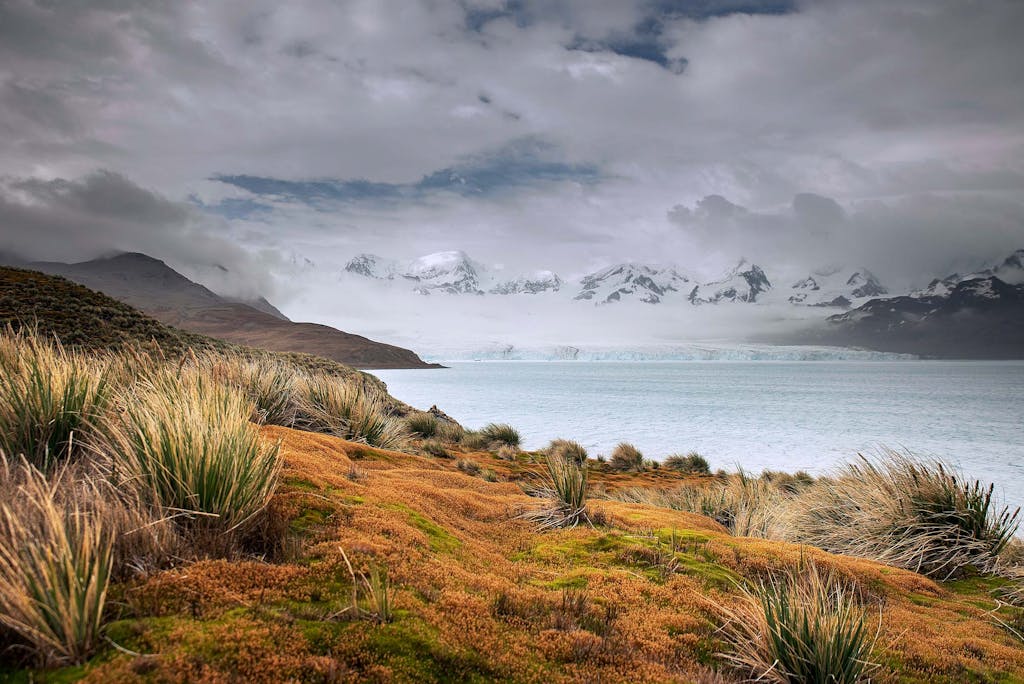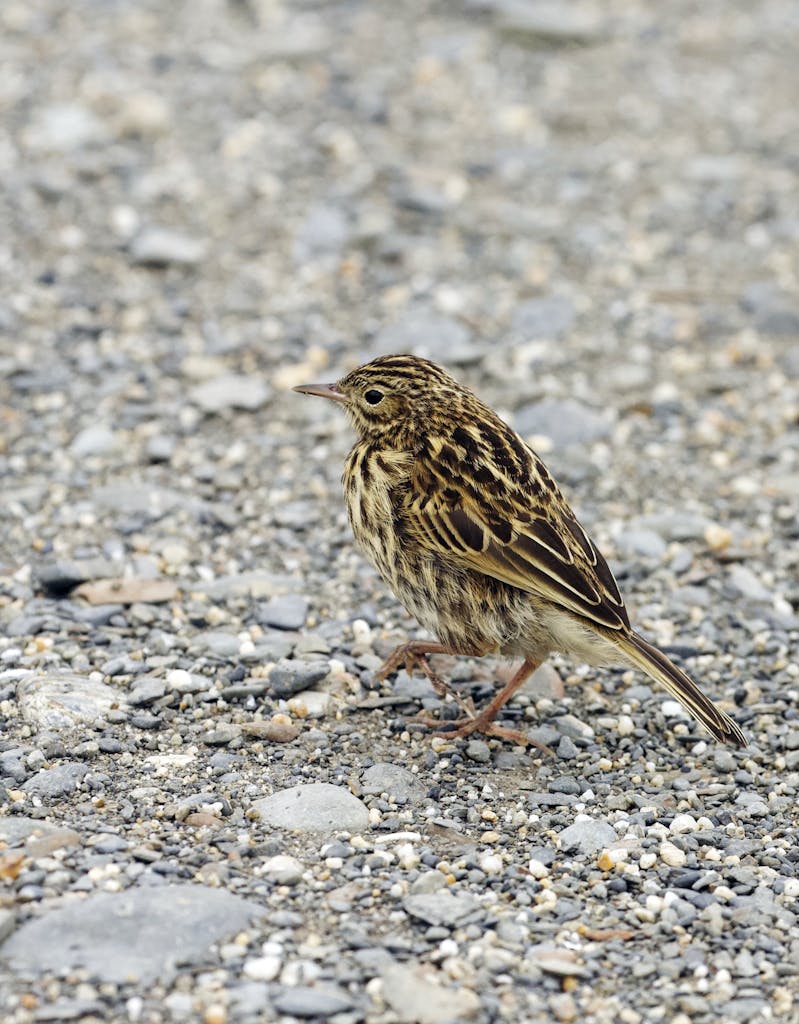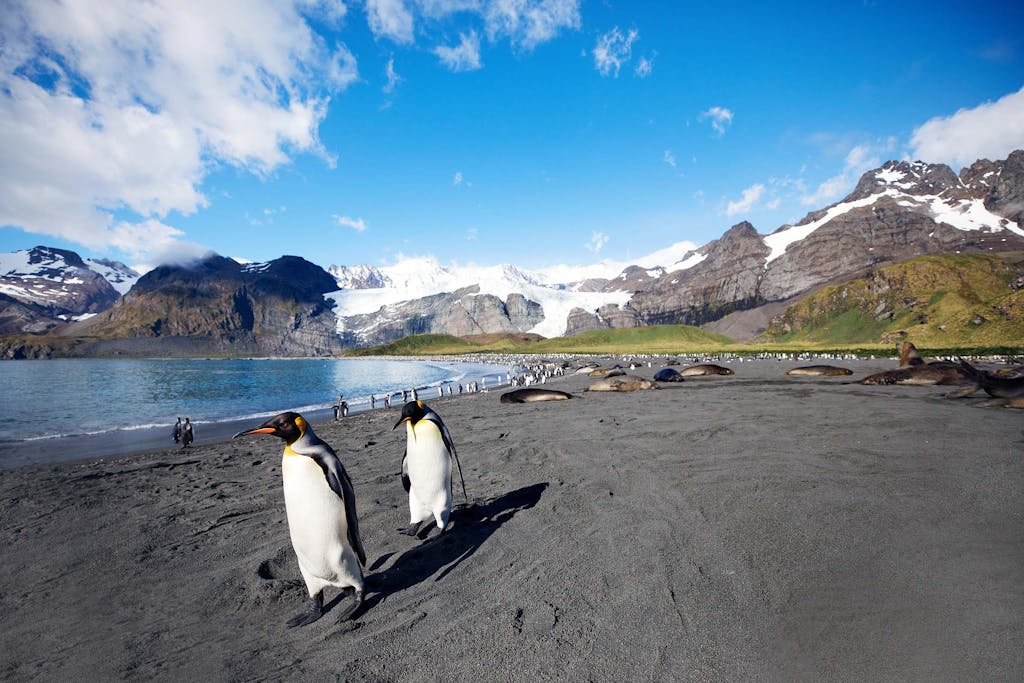A Detailed Guide to Recognizing the South Georgia Pipit
A gust of icy wind rakes the tussock grass. It lifts sand into my eyes while on South Georgia Island, a small slice of snow-capped Andes mountains cast far away into the freezing Southern Ocean. It seems like no place for a tiny songbird, yet I’m watching a sparrow-sized, brown streaky bird bounce across a beach. It’s a South Georgia Pipit, endemic to the island, and also the southernmost songbird on the planet. It darts in and around three slumbering and blubbery elephant seals, and the contrast between their sizes is stark. The bird has survived and thrived here against the odds. That is, until the rats came.

Right after British explorer James Cook put South Georgia on the map in 1775, scores of men arrived to plunder the natural bounty. They stripped the seals of their fur and then destroyed the untouched beauty of the island by inadvertently releasing a plague of rats that swept over the once pristine wilderness. While the human arrivals plundered the beaches in search of fur seals and then later cleared the sea of whales, the rodents overran their new larder. The eggs and chicks of ground-nesting birds made for easy pickings. For the next two hundred years, the pipit, along with the many seabird species nesting on the island, would have to fight a protracted, rear-guard battle against the now higher-stacked odds. The birds didn’t stand a chance against the hungry hordes.
Singing in Defiance
It wasn’t until 10 months into my two-year stay on South Georgia that I finally got to see the pipit. I was struggling to walk up a snow-covered boardwalk on the specially-protected and rat-free Prion Island, which is a small, offshore island strictly controlled to preserve the Wandering Albatross that nest there.

Pausing, I heard a sound I had never heard during all of those 10 months— birdsong. Then I saw my first South Georgia Pipit, perched on a tussock stool and singing in defiance to the lingering and, at times, seemingly eternal winter. It was gone again within a moment but that warm sound stayed with me, leaving a sense of renewed hope that somehow the tide could be turned in its favor.
For the remainder of my two-year contract on the island with the British Antarctic Survey, I saw as many rats as I did pipits. I even managed to chase down two of those rats and squashed them— a token contribution, and one that upon reflection probably brought more moral turmoil than pipit benefit. But like so many others, I wished South Georgia to return to a time before human blemish. I longed for birdsong, and that meant the rats had to go.
The Race Against Time

As it was, the pipit had retreated to rat-free areas such as small offshore islands, sea stacks and the few pockets of the main island that glaciers protected. Rats had not yet successfully crossed these icy barriers. As long as the ice reached the sea, then those remaining citadels stood. Those same barriers also conveniently broke the island up into manageable areas, say, for example, if you wanted to treat the island for rats piece by piece. When I first arrived on the island in late 2008, climate change was already taking its toll on the glaciers. The clock was ticking.

Once the glacial retreat opened up the rest of the island to rats, the task would mushroom to an unmanageable scale. A plan began to form, spearheaded by the South Georgia Heritage Trust. Those brave enough to dare think of a rat-free South Georgia bolstered their dreams with news of a rat-free Campbell Island, in the New Zealand sub-Antarctic. The cogs were also moving on the even larger and more ambitious Macquarie Island, in the Australian sector.
The Habitat Restoration Project, as it became known on South Georgia, was to become the largest eradication project to date. Perhaps most importantly, it became everyone’s project. While the South Georgia government provided support, the financial clout came from organizations and individual contributors. By the time a helicopter dropped the first poison baits in March 2011, cruise ship guests had contributed $40,000.

At times the challenging weather conditions put the operations in doubt. In the not-so-protected Royal Bay on the southeastern end of the island, one of the three helicopters broke free from its tethers and blew over. On other occasions, it was the persistent low damp subantarctic clouds that grounded flights for days on end. Monitoring the success of the project took place after three seasons of bait drops.
Sniffing Out Success
The project deployed over 4,600 detection devices such as flavored chew sticks and tracking tunnels to determine if any rats remained. Also, two dog handlers with three specially trained rodent detection dogs scoured the island. The dog handlers covered a combined distance of nearly 1000 miles (1608 kilometers). The dogs themselves traversing a total of just over 1500 miles (2420 kilometers), which is roughly equivalent to walking from Washington, D.C. to Austin, Texas, or from Lisbon to Munich. Perhaps a more realistic comparison given the nature of the terrain is that the ground covered by the two handlers was equivalent to climbing Mount Everest eight times, with the dogs pipping them at 12.9 times. In May 2018, the South Georgia Heritage Trust declared the £10 million (more than US$12 million) eradication project a success; no rats had been found.
Every year since the first bait dropped on South Georgia, I have been fortunate enough to revisit the island, now guiding guests for Silversea Expeditions. Just offshore, I marvel at the strengthening flocks of prions and Storm Petrels— small seabirds formerly preyed upon by the rodent army. At Salisbury Plain, some 100,000 King Penguins shuffle and shimmer before us, resplendent in their bright orange cravats and ear patches. I’m still in awe of them, just like the guests I bring there are.

But for me, though, what is more thrilling is the noticeable and dramatic increase in South Georgia Pipit numbers. I get quizzical looks as I point out the flitting, almost inconspicuous bird against such a distracting backdrop. It’s not until I explain the full story of how this little bird nearly succumbed to the rat invasion that the looks begin to break into smiles. They hear how the pipit’s voice didn’t become the lost song of the subantarctic, after all.
Silversea Expedition Leader and Marine Biologist Luke Kenny’s experience in South Georgia started in November 2008, when he began a two-year contract as Fisheries Biologist on South Georgia, as part of the British Antarctic Survey base there. His studies on fish biology (diet, growth, etc.) contributed to the management of what is one of the best-run fisheries in the world. Two years without a break on a small remote island and living in such close proximity to an abundance of wildlife was a life-changing experience and furthered an already deep love for the Antarctic environment.



















